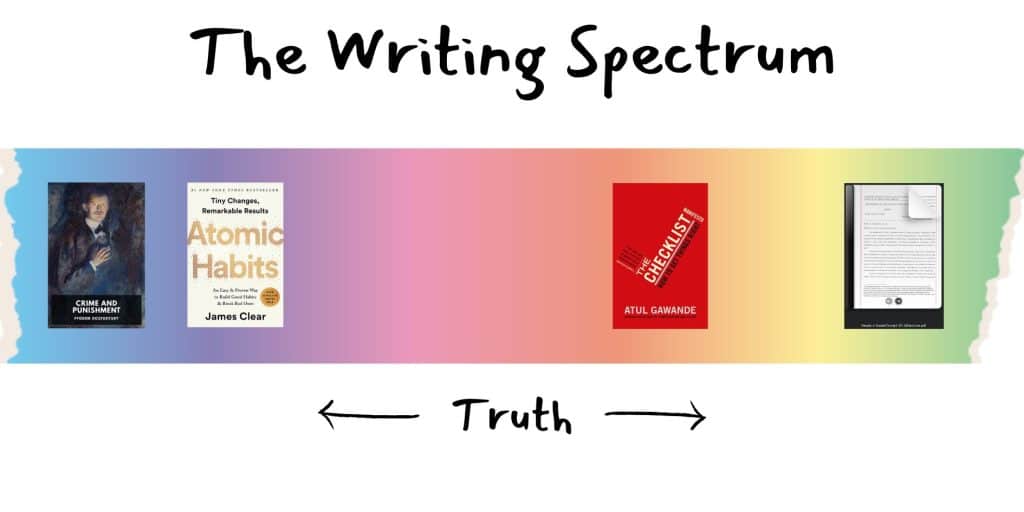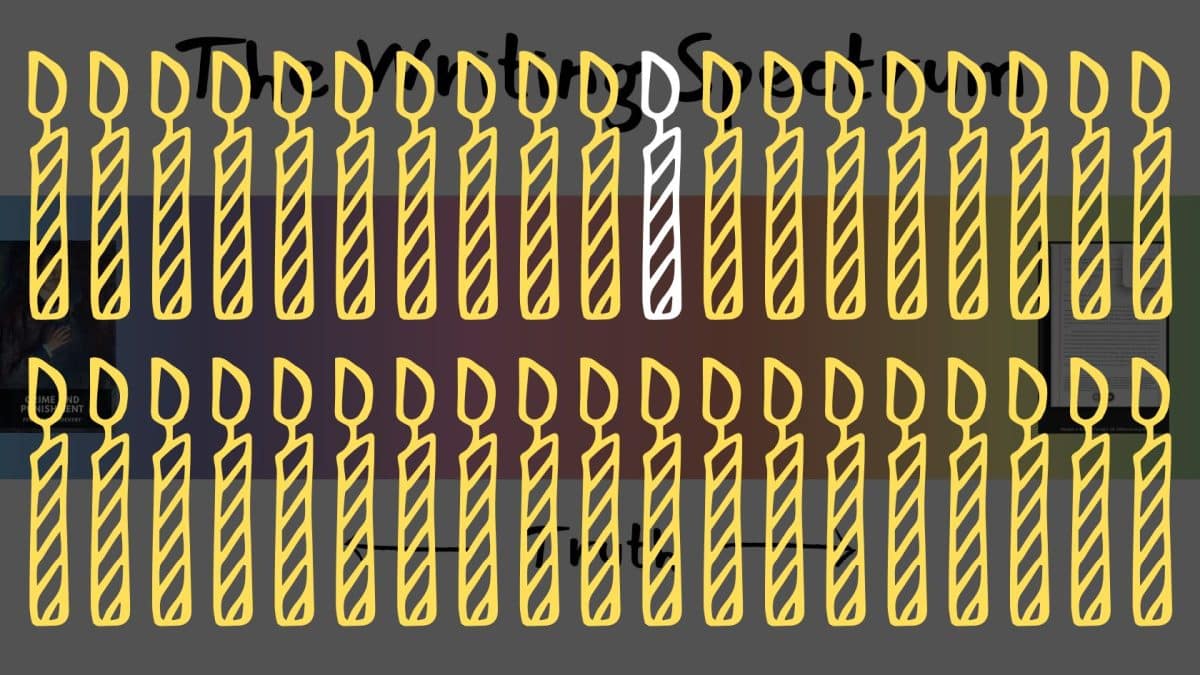This blog is part of my 38 before 38 series. I write a blog for every single day for the 38 days leading up to my 38th Birthday.
The most popular software for writing fiction isn’t Word. It’s Excel.
—Brian Alvey (@brianalvey) June 22, 2011
I think the fiction/non-fiction dichotomy is a limited way of looking at text. You can learn more about the immigrant experience in the US from American Gods, than by reading the latest jobs report data segmented by national origin. Memoirs, pop history, pop science, etc. are all categorized as “non-fiction”. All are full of far more glaring lies than any fantasy or scifi book.
Even if they are not intentional, summarizing a complex person, event, or phenomenon into a a few hundred pages would lead some oversimplification, some omission, and some misinterpretation. How is that any different from a fiction?
A better model
As far as I can see, all writing and reading is a path to The Truth. Writing then becomes a spectrum between how the truth feels(like Crime & Punishment) to how the truth seems(like criminal court proceedings).

By looking at all text through this more nuanced angle, we can come as close to the truth as humanly possible. We need can read the memoir of a soldier who fought during World War 1, historical archives looking at letters between the world leaders during the time, and All Quite on the Western Front.
But what falls where
That is the difficult question. Though, given enough experience, most readers will be able to figure it out. For example, here are two excerpts about the same scientific experiment by two “non-fiction” books in the same genre.
Atomic Habits by James Clear
That was when Luby and his team partnered with Procter & Gamble to supply the neighborhood with Safeguard soap. Compared to your standard bar of soap, using Safeguard was a more enjoyable experience.“In Pakistan, Safeguard was a premium soap,” Luby told me. “The study participants commonly mentioned how much they liked it.” The soap foamed easily, and people were able to lather their hands with suds. It smelled great. Instantly, handwashing became slightly more pleasurable.
The Checklist Manifesto
Ironically, Luby said, Procter & Gamble considered the study something of a disappointment. His research team had found no added benefit from having the antibacterial agent in the soap. Plain soap proved just as effective. Against seemingly insuperable odds, it was more than good enough. Plain soap was leverage.
The secret, he pointed out to me, was that the soap was more than soap. It was a behavior-change delivery vehicle. The researchers hadn’t just handed out Safeguard, after all. They also gave out instructions—on leaflets and in person—explaining the six situations in which people should use it. This was essential to the difference they made. When one looks closely at the details of the Karachi study, one finds a striking statistic about the house- holds in both the test and the control neighborhoods: At the start of the study, the average number of bars of soap households used was not zero. It was two bars per week. In other words, they already had soap.
You can clearly see which is a citation trying to illustrate its point and which is some poetic license. Space constraints prevent me from providing further context for each work. But I am confident that these are representative samples.

None of this is a value judgement, but a way to illustrate how the same information can be imparted from different places on our spectrum.
What about Objectivity?
It would be hard to argue that a “fiction” author care for being objective. One can never be truly objective. It is human to be biased towards your beliefs. The authors you read are no less, or more, human. No matter how careful and rigorous you are, there are bound to be mistakes. The process of science itself requires multiple replications to verify. To label something as “non-fiction” does not change the person writing it.
Both type of writing is, in the end, focusing of verisimilitude. The appearance or semblance of the truth. Which is the best we can expect.

